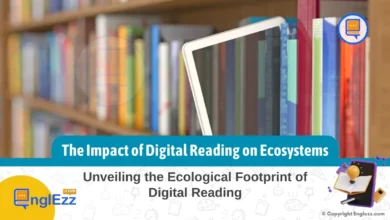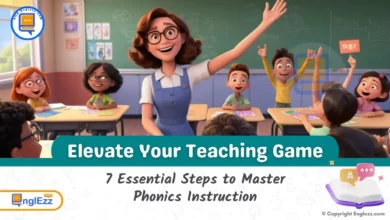The multifaceted landscape of language acquisition heralds a crucial emphasis on teaching pronunciation to multilingual young learners, encapsulating a pivotal juncture where linguistic proficiency converges with communicative efficacy. In this article, we shed light on innovative strategies for teaching Pronunciation to young learners.
In the evocative realm of language learning, the fidelity of pronunciation serves as an indelible cornerstone, underlining the intricate tapestry that binds learners to the nuances of oral expression. Educators navigating this pedagogical terrain are met with a mosaic of challenges as they endeavor to illuminate pathways toward phonetic precision among students whose linguistic trajectories span diverse and intersecting boundaries.
In the ever-evolving landscape of language acquisition, one challenge remains constant: breaking the formidable barrier of pronunciation. For young learners, mastering the nuances of pronunciation can be a daunting task, influenced by factors ranging from native language interference to individual speech development.
From phonetic exercises to interactive games, we uncover dynamic approaches that not only engage young learners but also foster a deep understanding and appreciation for the beauty of linguistic expression. Join us on this academic journey as we unravel the complexities of teaching pronunciation to young minds, ultimately bridging gaps and cultivating a generation poised for linguistic success.
Table of Contents
- Strategies for Teaching Pronunciation To Young Learners
- Understanding Pronunciation Challenges
- Strategies for Teaching Pronunciation
- Interactive Apps and Online Resources Use
- Tailored Interventions for Specific Language Backgrounds
- Teaching Pronunciation Feedback and Assessment Techniques
- Integration of Pronunciation into Curriculum Design
- Professional Development for Educators
- Wrapping Up
- Final Tips
- Further Research On
- FAQs
- Q: How long does it take for multilingual young learners to improve their pronunciation skills significantly?
- Q: Is it necessary to correct every pronunciation error made by multilingual students?
- Q: Are there specific age groups where teaching pronunciation to multilingual children is most effective?
- Q: How important is cultural sensitivity when addressing pronunciation challenges among multilingual young learners?
- Q: What resources are available for educators seeking further guidance on teaching pronunciation to multilingual young learners?
Strategies for Teaching Pronunciation To Young Learners
Amidst the vibrant amalgamation of languages echoed within classroom walls, educators grapple with a labyrinthine array of obstacles in their pursuit to nurture impeccable pronunciation among multilingual learners. Encountering the cavernous depths of phonetic distinctions and native language interferences that reverberate through each syllable pronounced, instructors find themselves at an impasse where engraining clarity becomes both an art and a science.

The cacophony of challenges unfolds against a backdrop where nuanced articulation not only mirrors cultural roots but also predicates effective communication in academic spheres and beyond, underscoring the exigency for educators to engineer innovative strategies for teaching Pronunciation to young learners that are adept at traversing these linguistic crossroads.
Understanding Pronunciation Challenges
When addressing the pronunciation challenges faced by multilingual young learners, it is crucial to acknowledge the profound impact that phonetic differences and native language interference can have on their language development. For instance, a Spanish-speaking student learning English may struggle with differentiating between similar vowel sounds that do not exist in their first language, leading to mispronunciations of words like “ship” and “sheep.” Similarly, Mandarin speakers might find it difficult to master the English “r” sound due to its absence in Chinese phonology. These instances exemplify how contrasting sound systems between languages can pose significant obstacles for learners striving for accurate pronunciation.
The repercussions of these challenges extend beyond mere linguistic accuracy; they directly influence students’ communication effectiveness and overall language proficiency within academic settings. Mispronunciations can hinder comprehension and impede meaningful interactions, potentially eroding learners’ confidence as they navigate classroom discussions or present oral reports.
Clear communication is paramount in educational contexts where effective verbal expression plays a vital role in demonstrating knowledge and engaging with peers and instructors alike. Therefore, understanding and addressing these pronunciation difficulties are essential steps towards enhancing students’ communicative competence and facilitating their integration into diverse academic environments.
Educators must recognize that these pronunciation impediments are not isolated issues but integral components of multilingual learners’ broader language acquisition process. The prevalence of these challenges underscores the necessity for targeted interventions aimed at honing students’ pronunciation skills to bolster their overall linguistic abilities comprehensively.
By delving deeper into the intricacies of these difficulties and their ramifications on communication efficacy, teachers can tailor instructional approaches that attend to individual needs effectively while fostering a supportive learning environment conducive to linguistic growth and academic success.
Strategies for Teaching Pronunciation
In the realm of teaching pronunciation to multilingual young learners, educators often rely on a combination of pedagogical approaches to address the intricacies of language sounds. One effective method is explicit instruction, wherein teachers provide clear explanations of phonetic concepts and guide students through targeted exercises to enhance their articulation skills.
For instance, educators might focus on minimal pairs — words that differ by only one sound — to help learners distinguish between similar phonemes that exist in English but not necessarily in their native languages. This deliberate teaching strategy can aid students in recognizing and producing accurate sounds crucial for effective communication.
Furthermore, modeling serves as a powerful tool in demonstrating proper pronunciation patterns for learners. By exemplifying correct intonation, stress patterns, and mouth movements during speech, instructors offer tangible benchmarks for students to emulate. Immersive activities like tongue twisters or choral reading exercises allow young learners to observe and imitate these models in a collaborative setting conducive to skill development. Such interactive engagements not only reinforce pronunciation norms but also foster a sense of community among multilingual students striving toward linguistic proficiency together.
Interactive Apps and Online Resources Use
Technology has emerged as a valuable ally in the quest for improved pronunciation skills among young language learners. Interactive apps and online resources have been curated with audiovisual aids tailored specifically to target common pronunciation errors encountered by multilingual speakers. These digital tools provide personalized feedback on individual utterances, allowing students to practice independently and receive instant corrective input.
For example, voice recognition software can analyze spoken language against native speaker norms, offering real-time suggestions for improvement based on recognized patterns of error—an invaluable resource supplementing traditional classroom instruction methods while promoting self-directed learning practices among today’s tech-savvy generation.
Creating A Supportive Learning Environment
Creating a supportive learning environment plays a vital role in improving multilingual young learners’ pronunciation skills. It is essential to establish a classroom atmosphere that nurtures linguistic confidence and provides opportunities for students to consistently practice their oral skills through engaging activities. For instance, teachers can organize group discussions or debates where students are encouraged to actively participate and speak up, fostering an environment where they feel comfortable experimenting with sounds and words. This kind of interactive engagement not only enhances pronunciation abilities but also boosts students’ overall language proficiency by increasing their speaking confidence.
Incorporating Peer-to-peer Interaction
Furthermore, incorporating peer-to-peer interaction into the learning environment can significantly benefit students striving to master pronunciation in a new language. Pairing students with diverse linguistic backgrounds allows them to learn from each other’s experiences and provide constructive feedback on each other’s pronunciation efforts. Through collaborative exercises like dialogues, role-plays, or pronunciation drills, students can engage in meaningful interactions that facilitate peer support and motivation. By partnering with classmates, learners have the opportunity to practice pronouncing challenging sounds together and receive instant feedback—an effective way to enhance their pronunciation accuracy.
In essence, creating a supportive learning environment goes beyond the traditional teacher-centered approach by emphasizing student collaboration and active participation. When educators foster a classroom culture that values linguistic diversity and encourages communicative practice, multilingual young learners feel more motivated to hone their pronunciation skills.
By building a community where verbal expression is celebrated and errors are viewed as natural stepping stones towards improvement, educators lay the foundation for enhanced language development among their students. Ultimately, this inclusive and interactive classroom environment cultivates not only better pronunciation skills but also fosters a deeper appreciation for language learning as a whole.
Tailored Interventions for Specific Language Backgrounds
When addressing pronunciation challenges in multilingual young learners, it is essential to recognize the distinct linguistic backgrounds they bring into the learning environment. For instance, students whose native language is Mandarin Chinese often struggle with English consonant clusters due to the absence of such structures in their mother tongue. In this scenario, educators can implement targeted interventions by focusing on specific phonetic drills or exercises aimed at developing the ability to articulate these unfamiliar sound combinations accurately. By tailoring instruction to address these language-specific difficulties, teachers can help students overcome pronounced pronunciation barriers effectively.
Moreover, adapting teaching strategies to accommodate phonetic contrasts or similarities between English and students’ native languages plays a pivotal role in enhancing pronunciation skills. For example, Spanish-speaking learners might find it challenging to differentiate between the English sounds represented by ‘sh‘ and ‘ch,’ as Spanish lacks distinct phonemic equivalents for these sounds.
Educators can design lessons incorporating minimal pairs activities wherein students discern and produce these sounds accurately in context-based exercises. Such tailored interventions not only facilitate greater awareness of phonetic nuances but also contribute to improved intelligibility when communicating in English across diverse linguistic contexts.
Incorporating cultural elements from students’ native languages into pronunciation instruction can further enrich the learning experience. For instance, educators working with Arabic-speaking learners could explore how certain speech patterns unique to Arabic may influence their spoken English. By acknowledging these influences and providing targeted practice opportunities focused on specific articulatory adjustments required for accurate English pronunciation, instructors can promote a deeper understanding of cross-linguistic differences while fostering a more inclusive learning environment that celebrates linguistic diversity among multilingual young learners.
Teaching Pronunciation Feedback and Assessment Techniques
In the realm of language acquisition, providing effective feedback is paramount in guiding multilingual young learners toward improving their pronunciation skills without undermining their motivation. One approach involves offering specific praise for aspects of pronunciation that have shown progress. For instance, commending a student on successfully mastering the correct placement of tongue positioning for a certain sound can reinforce positive learning outcomes and encourage further development.
Additionally, employing the “sandwich method” where constructive criticism is sandwiched between two positive comments can help maintain students’ confidence while addressing areas needing improvement.
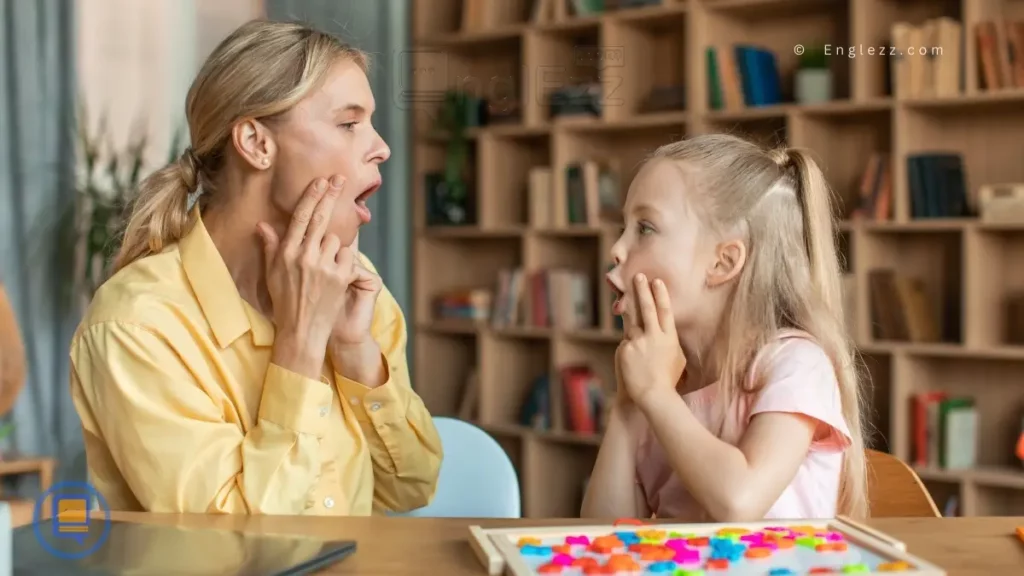
Assessment tools play a crucial role in evaluating students’ pronunciation accuracy and tailoring instructional plans to meet individual needs. Utilizing tools like recording software or apps that analyze phonetic patterns can offer valuable insights into students’ pronunciation proficiency. For example, by using voice recognition technology, educators can pinpoint specific phonemes causing difficulty for learners and customize remedial exercises accordingly.
These assessments not only track progress over time but also inform educators on adjustments required in teaching strategies to address persistent challenges.
Furthermore, facilitating peer-to-peer assessment activities can enhance the feedback process by promoting collaborative learning and mutual support among students. Pairing learners with varying proficiency levels allows for constructive critique from peers who may have already mastered certain phonetic nuances. By engaging in reciprocal feedback sessions, students not only receive guidance from their peers but also develop critical listening skills essential for improving their own pronunciation.
Encouraging self-assessment through reflection tasks where students record themselves speaking and evaluate their own performance can also be a valuable tool in nurturing autonomy in pronunciation practice among multilingual young learners.
Integration of Pronunciation into Curriculum Design
Integrating pronunciation instruction effectively into language curriculum design is essential for ensuring that multilingual young learners develop strong communication skills. At various proficiency levels, educators can incorporate pronunciation seamlessly by aligning it with other language components like vocabulary and grammar. For instance, in beginner classes, instructors can introduce basic phonetic exercises as part of daily vocabulary practice to reinforce correct sounds early on.
As students progress to more advanced levels, teachers may integrate more sophisticated pronunciation activities that focus on intonation patterns and word stress within contextualized conversations or listening tasks. By embedding pronunciation instruction across different language learning contexts, educators can emphasize its importance and provide learners with consistent opportunities to practice and improve their speaking skills.
Collaboration with colleagues and leveraging institutional resources play a pivotal role in enhancing the quality of pronunciation teaching within educational settings. Through professional development initiatives and peer interactions, educators can share best practices, discuss challenges faced in teaching pronunciation to multilingual students, and co-create innovative strategies for addressing these issues.
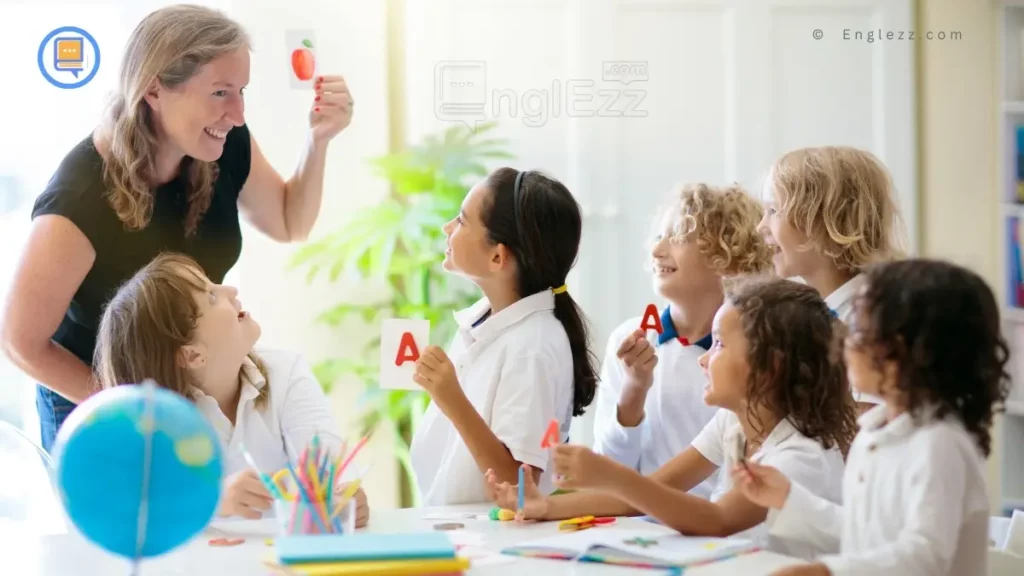
Collaborative efforts among instructors specializing in language acquisition can lead to the development of comprehensive lesson plans that incorporate effective pronunciation activities tailored to diverse learner needs. Moreover, coordination with language labs or multimedia resources within educational institutions can offer additional support by providing students access to interactive tools specifically designed to enhance their pronunciation skills outside traditional classroom hours.
By integrating pronunciation into curriculum design through collaborative partnerships and resource utilization, institutions can create a conducive environment for fostering linguistic competence among multilingual young learners. This approach not only acknowledges the significance of accurate pronunciation in overall language proficiency but also underscores the shared responsibility of educators in collectively advancing pedagogical practices that address the unique needs of diverse student populations striving to overcome linguistic barriers.
Ultimately, a well-rounded curriculum design that prioritizes effective pronunciation instruction contributes significantly to creating an inclusive learning experience wherein students are empowered to communicate confidently in their target language.
Professional Development for Educators
In the realm of teaching pronunciation to multilingual young learners, continuous professional development serves as a cornerstone for educators aiming to enhance their instructional approaches and methodologies. Ongoing learning opportunities are integral for instructors to remain updated on the latest research-backed practices that prove effective in addressing the diverse needs of multilingual students in pronunciation instruction.
For instance, attending conferences focused on linguistics or language acquisition can expose educators to cutting-edge research findings that contribute valuable insights into best practices for teaching pronunciation to multilingual learners. Workshops specifically tailored to pronunciation pedagogy offer hands-on training and practical strategies that educators can seamlessly integrate into their teaching repertoire.
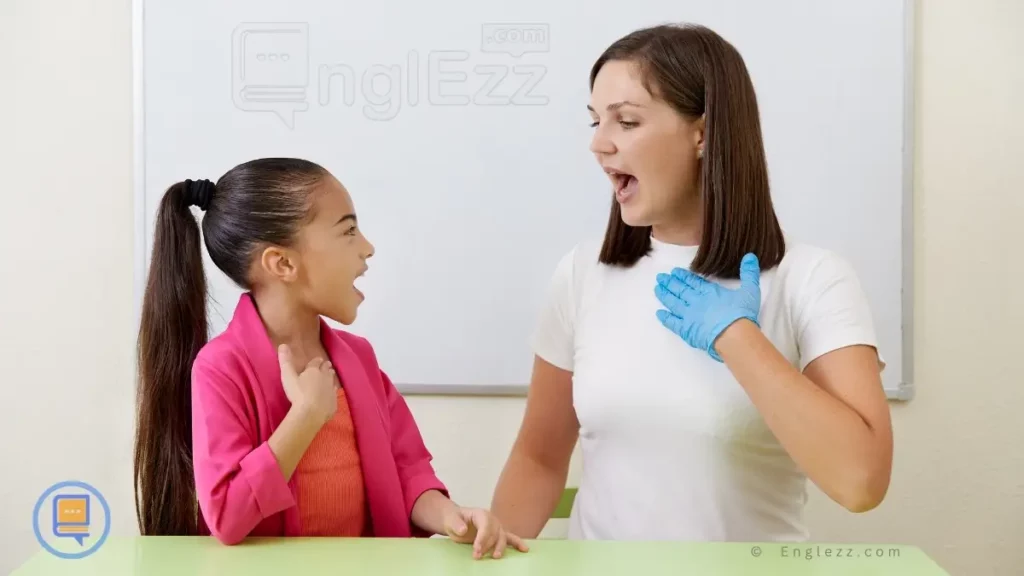
Moreover, seminars dedicated to exploring innovative techniques and resources for teaching pronunciation can provide teachers with fresh perspectives and tools to engage students effectively. These platforms not only introduce novel approaches but also create spaces for collaborative learning among educators working towards a common goal of enhancing multilingual learners’ pronunciation skills.
Networking opportunities within professional development settings allow instructors to exchange ideas, share successful methodologies, and build a supportive community focused on refining pronunciation instruction strategies. By engaging in such events, educators harness a wealth of knowledge and expertise that enriches their professional practice and empowers them to better cater to the diverse linguistic needs of their students.
Recognizing the significance of ongoing professional development in honing educators’ skills in teaching pronunciations is crucial for maintaining instructional quality and ensuring positive outcomes for multilingual learners. Within educational institutions, investing in structured training programs aimed at improving instructors’ proficiency in addressing pronunciation challenges effectively is essential. Furthermore, promoting a culture of continuous learning among teachers fosters a dynamic environment where innovative approaches to teaching pronunciation flourish, ultimately benefiting the overall language acquisition process among multilingual young learners.
Cultivating Active Student Engagement and Sustained Motivation
Cultivating active student engagement and sustained motivation are crucial facets of effective pronunciation instruction for multilingual young learners. Encouraging students to actively participate in pronunciation practice enhances their oral proficiency and confidence in speaking the target language. One strategy to foster engagement is through gamified activities that make learning fun and interactive, such as pronunciation bingo or tongue twisters competitions. By incorporating elements of play into pronunciation exercises, educators can capture students’ interest and maintain their focus on improving phonetic accuracy.
Leveraging Real-world Contexts
Leveraging real-world contexts can significantly boost student engagement in pronunciation tasks. For instance, creating opportunities for students to practice pronunciation through role-playing scenarios where they engage in simulated conversations or presentations not only refines their language skills but also underscores the practical relevance of clear speech in communication. By linking language learning objectives with authentic communicative contexts, instructors can inspire students to actively engage with pronunciation practice as a means of enhancing their overall linguistic competence.
Furthermore, integrating multimedia resources into pronunciation lessons can heighten student motivation by offering diverse modalities for practicing sounds and intonation patterns. For example, utilizing video clips featuring native speakers demonstrating correct pronunciation allows learners to visually and auditorily compare their own production with authentic models.
This multimodal approach not only caters to different learning styles but also reinforces the importance of accurate pronunciation in conveying meaning effectively. By incorporating technology-enhanced activities that cater to digital-native learners’ preferences, educators can create dynamic and engaging pronunciation sessions that motivate students to strive for continuous improvement in their spoken language skills.
Wrapping Up
The effective pronunciation instruction is a fundamental aspect of language learning for multilingual young learners. Cultivating student engagement and motivation through interactive activities, peer collaboration, and targeted feedback plays a pivotal role in fostering their oral skills development. By creating a supportive learning environment where students feel encouraged to practice and improve their pronunciation without fear of judgment, educators can enhance the overall language acquisition process. Furthermore, integrating pronunciation seamlessly into the curriculum design at various proficiency levels ensures that learners receive consistent and structured guidance in mastering phonetic nuances.
Ultimately, professional development opportunities for educators are crucial to staying abreast of research-based practices essential for effectively addressing the pronunciation needs of multilingual students. Continuous training, workshops, and networking events can empower instructors to employ innovative strategies tailored to the diverse linguistic backgrounds present in their classrooms.
By equipping teachers with the necessary tools and knowledge, educational institutions can better support comprehensive language teaching inclusive of pronunciation skills. Through collaborative efforts among educators within institutions, a holistic approach to language instruction that prioritizes pronunciation can be achieved.
As educators navigate the challenging terrain of teaching pronunciation to multilingual young learners, it is imperative to keep sight of the overarching goal: breaking down communication barriers and enhancing linguistic proficiency. By embracing diverse teaching strategies tailored to individual needs and consistently assessing progress through targeted feedback mechanisms and assessment tools, instructors can guide students on their journey towards mastering pronunciation skills across various languages. Empowered students will not only communicate more effectively but also gain confidence in expressing themselves fluently in academic settings and beyond.
Final Tips
In navigating the complexities of teaching pronunciation to multilingual young learners, it is crucial for educators to bear in mind a few key tips that can enhance their instructional strategies. First and foremost, setting clear objectives and expectations regarding pronunciation goals is pivotal. By establishing measurable targets for students to work towards, teachers can provide structured guidance and feedback tailored to each learner’s needs. For instance, creating a pronunciation portfolio where students record their progress through audio clips can serve as a tangible way to track improvement over time.
Secondly, incorporating varied and interactive activities into the curriculum can significantly boost engagement and motivation among language learners. Utilizing resources like tongue twisters, storytelling sessions, or role-playing exercises not only makes pronunciation practice enjoyable but also reinforces learning in diverse contexts. For example, organizing a pronunciation game show activity where students compete in correct word enunciation can foster healthy competition while honing pronunciation skills effectively.
Lastly, fostering a supportive classroom environment that celebrates linguistic diversity and encourages risk-taking is paramount for successful pronunciation instruction. By promoting a culture of respect for different accents and languages spoken by students, teachers can cultivate a safe space where learners feel comfortable practicing new sounds without fear of judgment. Implementing peer feedback sessions or group discussions on language variations can further nurture an inclusive atmosphere conducive to continuous improvement in pronunciation proficiency.
Further Research On
The challenges of teaching pronunciation to multilingual young learners are significant yet navigable with effective strategies and a nuanced understanding of linguistic development. The exploration of various pedagogical approaches, the importance of creating supportive environments conducive to language learning, and the necessity for tailored interventions based on students’ specific linguistic backgrounds all contribute to a comprehensive methodology in addressing pronunciation issues. Educators and language instructors play a crucial role in facilitating the progression of these learners toward achieving greater accuracy and fluency in their target language.
Moving forward, continued research into innovative teaching methods that incorporate technology, ongoing professional development opportunities for educators, and collaborative efforts within educational institutions will be key in advancing the field of ESL instruction focused on pronunciation. By embracing diverse instructional techniques tailored to individual student needs and fostering an environment that values linguistic diversity, educators can break down the language barriers often faced by multilingual young learners.
FAQs
Q: How long does it take for multilingual young learners to improve their pronunciation skills significantly?
A: The time taken for noticeable improvement in pronunciation skills among multilingual young learners varies depending on factors such as individual aptitude, exposure to the target language environment, and consistency of practice. While some learners may show rapid progress, others may require more time to develop phonetic accuracy.
Q: Is it necessary to correct every pronunciation error made by multilingual students?
A: Providing corrective feedback on every pronunciation error made by multilingual students is not always essential. Prioritizing errors that hinder intelligibility or cause significant communication breakdowns can help focus instructional efforts where they are most needed while also promoting students’ confidence.
Q: Are there specific age groups where teaching pronunciation to multilingual children is most effective?
A: While early intervention is beneficial in developing accurate pronunciation skills in multilingual children due to increased neuroplasticity at younger ages, effective strategies can also be implemented with older learners. Tailoring approaches to suit different developmental stages can optimize outcomes regardless of age group.
Q: How important is cultural sensitivity when addressing pronunciation challenges among multilingual young learners?
A: Cultural sensitivity plays a vital role in building trust and rapport with multilingual students, particularly when providing feedback on pronunciation difficulties rooted in their native language’s phonetics. Understanding and respecting students’ cultural backgrounds can enhance their engagement and willingness to learn.
Q: What resources are available for educators seeking further guidance on teaching pronunciation to multilingual young learners?
A: Educators looking for additional support in teaching pronunciation to multilingual young learners can access a range of online resources, academic journals focused on ESL instruction, professional development workshops offered by educational institutions or organizations dedicated to language education.



